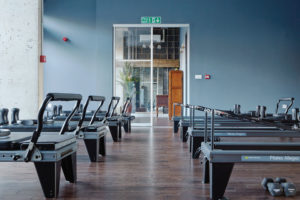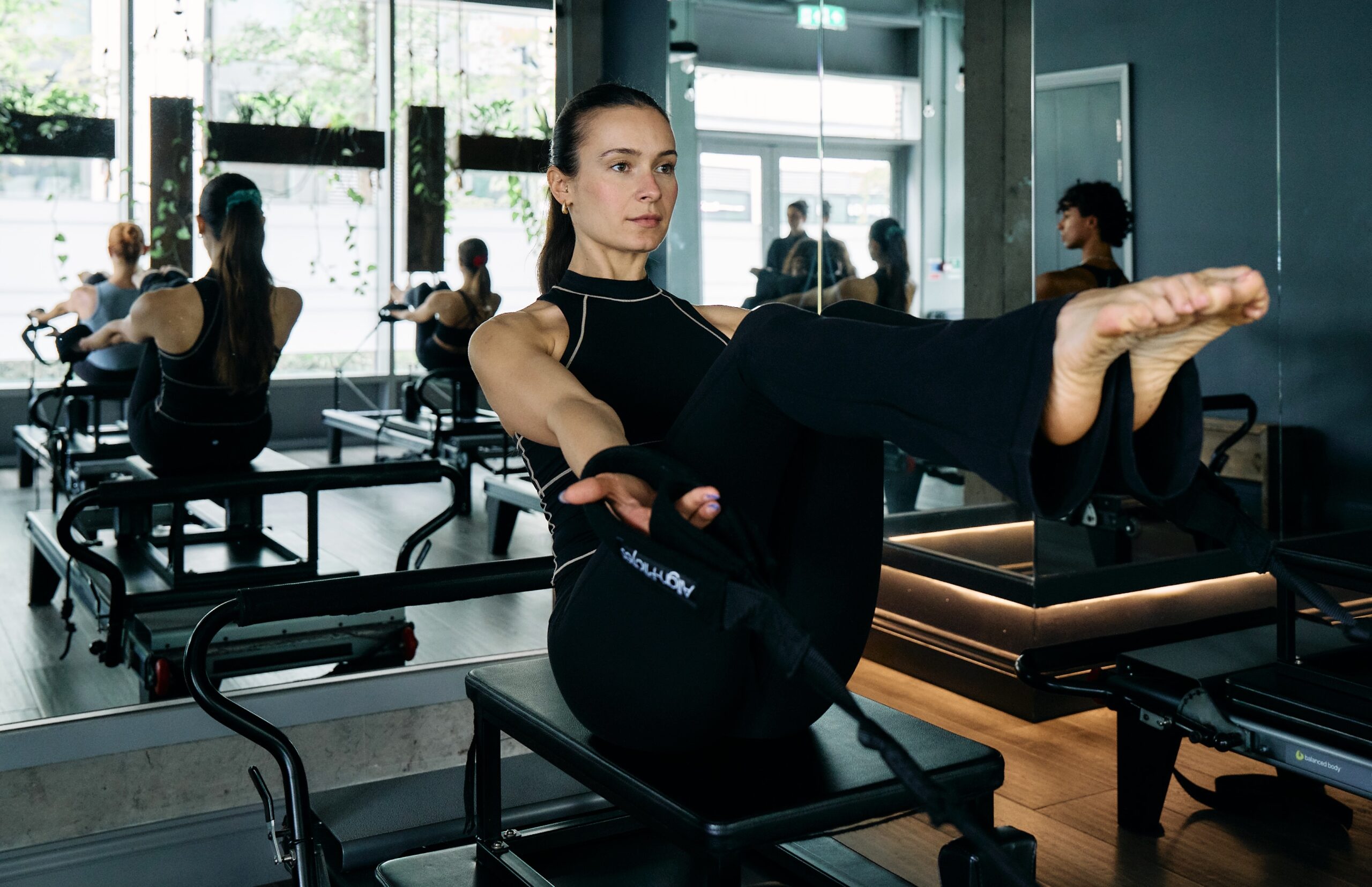With International Pilates Day just around the corner, people from all over the world are gearing up to honour the contribution of Joseph Pilates and his revolutionary method. Pilates’ technique focuses on building core strength, improving flexibility, and enhancing the connection between the mind and body, which has helped countless individuals worldwide enhance their fitness and overall well-being.
Joseph Pilates and The Origins of the Pilates Method
Born in 1883 in Mönchengladbach, Germany, Joseph Pilates was a renowned physical trainer. Pilates had a difficult childhood and suffered from several health issues, including rickets, asthma, and rheumatic fever. His health struggles motivated him to seek knowledge about physical fitness and anatomy to improve his overall well-being. He studied various exercise disciplines and eventually developed his innovative system that focused on core strength, balance, and flexibility.
The Pilates method combines elements of yoga, martial arts, gymnastics, and dance, and emphasises controlled movements and breathing techniques. Pilates believed that his method could help people achieve optimal physical health, mental clarity, and spiritual well-being. Today, the Pilates method is widely recognised as an effective form of exercise that can improve posture, reduce stress, and enhance overall physical fitness.
Joseph Pilates: From Internment to Innovation
Pilates was interned in England during World War I. While in captivity, Pilates used his time to experiment with different exercise routines that were meant to improve physical health and well-being. He ingeniously used bed springs to create resistance exercise equipment that could be used by immobilised detainees, which later evolved into the specialised equipment used in Pilates today.
The beginnings of Contrology
After the war, Pilates migrated to the United States in the 1920s, where he settled in New York City with his wife, Clara. He opened a fitness studio where he introduced his exercise system, which he originally called “Contrology,” to a wider audience. Pilates’ system soon gained popularity, especially among dancers and actors who were drawn to the method for its ability to enhance performance and rehabilitate injuries.
Pilates’ unique method of exercise involves a combination of physical and mental conditioning, with a focus on developing core strength, flexibility, balance, and control. His approach to fitness built on the mind-body connection, with an emphasis on breathing and proper alignment. Pilates believed that his exercise system could improve not only physical health but also mental and emotional well-being. Today, Pilates is still widely practised around the world, and it continues to be recognised for its many health benefits.
A Century of Joseph Pilates: From the “Roaring” Twenties to the Twenty-Twenties
Pilates has come a long way since its inception in the 1920s, and now, in the twenty-twenties, it is one of the most current popular forms of exercise.
 1920s: Foundations in New York
1920s: Foundations in New York
Joseph Pilates moved to the United States in the 1920s, settling in New York City with his wife, Clara. They opened a fitness studio on Eighth Avenue, close to the New York City Ballet. This location was strategic, as it attracted many dancers who found Pilates’ method excellent for rehabilitation from injuries and for enhancing their performance through better strength and flexibility.
1930s-1940s: Growth Among Dancers
During this period, the Pilates method gained popularity primarily among dancers. Notable dance figures such as George Balanchine and Martha Graham became followers of the method. Pilates continued to refine his techniques and equipment, emphasising the importance of mind-body connection, core strength, and precise movements.
1950s-1960s: Broader Recognition
The Pilates method started to gain attention beyond the dance community. Joseph Pilates wrote two books, “Your Health” (1934) and “Return to Life Through Contrology” (1945), which helped spread his exercise philosophy. Despite its growing popularity, Pilates was still largely a niche activity practised by a relatively small group of supporters.
1970s-1980s: Expansion and Formalisation
After Joseph Pilates’ death in 1967, his wife Clara and their disciples continued to teach and expand the method. During the 1970s and 1980s, Pilates was recognised as a valuable tool and was used in many rehabilitation programmes. This period also saw the first generation of Pilates teachers who were not directly trained by Joseph or Clara Pilates, leading to a formalisation of training programs and certification processes.
1990s: Mainstream Popularity
The 1990s witnessed a significant surge in the popularity of Pilates. The method benefitted from the growing fitness culture in the United States and around the world. Videos, books, and television features made Pilates accessible to a broader audience. Comprehensive teacher training programmes helped standardise the practice and ensure its integrity.
2000s-2020s: Global Expansion and Diversification
During the early 21st century, Pilates experienced a global expansion and became a common practice in gyms and studios across the globe. With the rise of the internet and digital media platforms, more people have been able to access Pilates with the help of online classes and tutorials.
Why Pilates Continues to Thrive in 2024
Pilates is a method that has been in existence for over a century. It has remained relevant and effective across different generations and lifestyles due to its enduring qualities. Here are some reasons why Pilates has stood the test of time:
-
Foundation in Rehabilitation:
Pilates was originally developed by Joseph Pilates in the early 20th century as a method of rehabilitation for injured soldiers during World War I. The focus on strengthening, stretching, and balancing the body made it highly effective for rehabilitation and injury prevention, which has continued to be one of its main appeals.
-
Adaptable and Scalable:
One of the greatest strengths of Pilates is its adaptability to different fitness levels and needs. Exercises can be modified to be easier or more challenging based on an individual’s capabilities. This adaptability also allows Pilates to be integrated into other fitness routines and makes it suitable for a broad demographic, ranging from elite athletes to those recovering from injuries, and even seniors.
-
Holistic Approach:
Pilates isn’t just about physical exercise; it also emphasises breath control, alignment, and mental focus, promoting an integrated approach to health that combines physical and mental disciplines. This approach has made it appealing to those who seek a balanced fitness routine.
-
Promotion of Core Strength and Stability:
Core strength is a central element of Pilates, and as more people have become aware of the importance of core stability for overall fitness and injury prevention, Pilates’ popularity has grown. Strong core muscles are essential not only for athletes but also for everyday activities.
-
Continual Evolution:
Over the decades, Pilates has evolved and integrated new knowledge and techniques from physiotherapy and exercise science. This evolution has kept the practice both modern and scientifically up-to-date, which helps maintain its relevance and effectiveness.
-
Global Spread and Community:
Pilates has spread globally since its inception, supported by a robust community of practitioners and instructors. The development of certification programs for instructors has also ensured that the teaching quality remains high and that the knowledge is passed on effectively.
-
Media and Celebrity Endorsement:
Over the years, many celebrities and public figures have endorsed Pilates as a key component of their fitness routines. This visibility has helped maintain its popularity and draw new practitioners.
Celebrating Joseph Pilates and International Pilates Day
International Pilates Day is celebrated annually on the first Saturday of May. This day is a celebration of Joseph Pilates’ legacy and the global impact of his exercise method. The continued popularity of Pilates, supported by International Pilates Day, demonstrates the timelessness of Joseph Pilates’ vision and the adaptability of his methods to meet contemporary fitness needs.
Looking for a reformer Pilates class near you this International Pilates Day? Try a Tempo 301 class and enjoy our 3 classes for £45 introductory offer!
Are there Reformer Pilates Classes Near Me?
Our Tempo Pilates classes can be found in London SE17 – Elephant & Castle, London E8 – Hackney and London E1 – Shoreditch.
Are there Beginner Reformer Pilates Classes Near Me?
All our Reformer Pilates classes have the level clearly indicated on them. Our L1 – Tempo Pilates classes, Beginner Pilates classes and Contemporary Pilates classes are suitable for beginners. Visit our studio pages to see if one of our Reformer Pilates London studios might be near you.
Alternatively visit one of our Google pages below to find directions, find updated studio hours or read Google reviews.
• Google page | SE17 – Elephant Park
• Google page | E8 – Hackney
• Google page | E1 – Shoreditch

